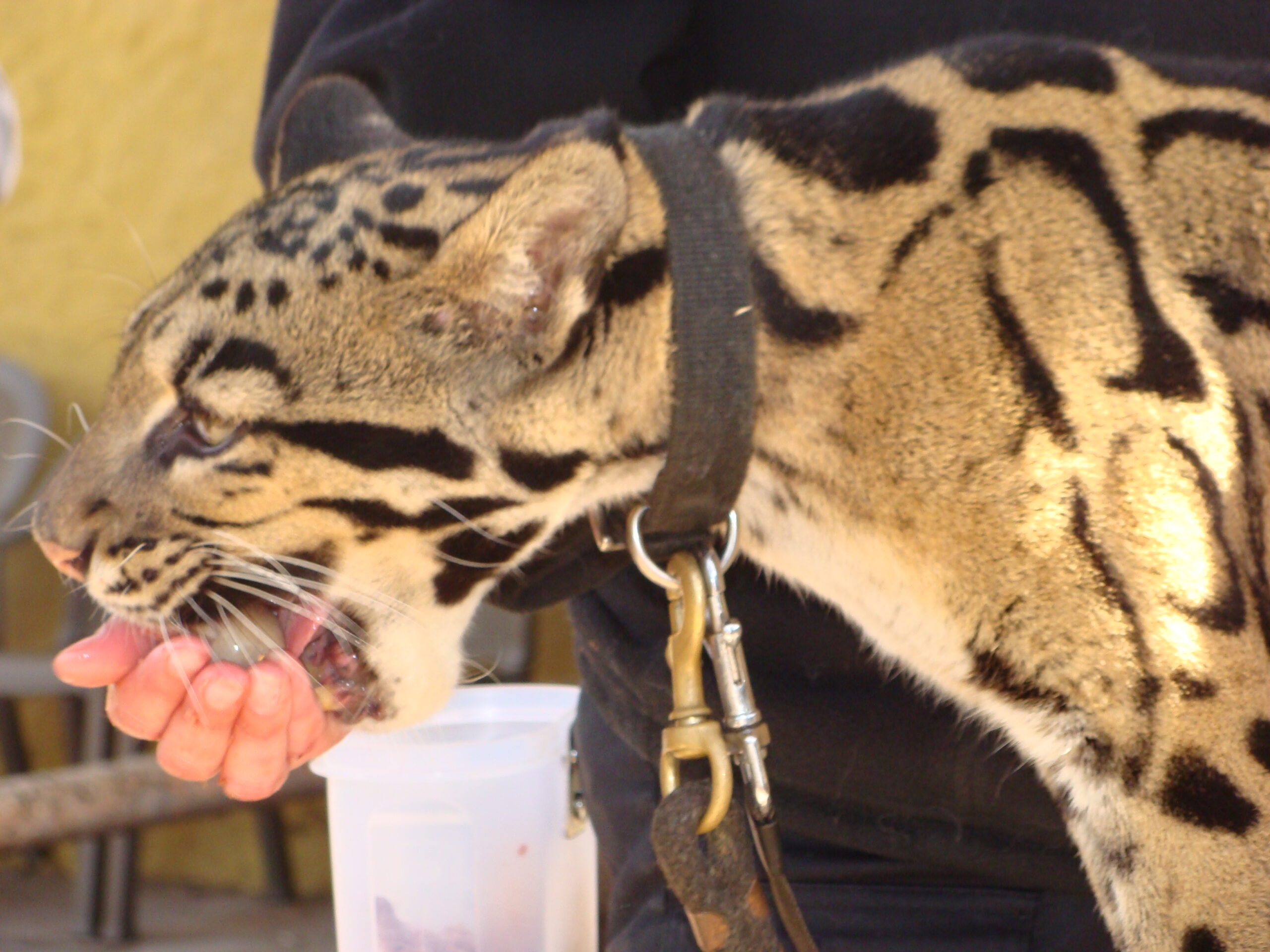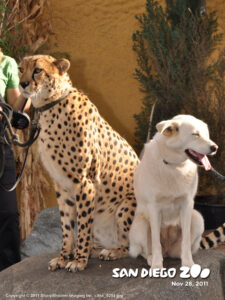Barks Blog
Progressive Zoos Never Use Aversive Punishment — Should You?
This series of blog posts recounts topics drawn from the Pet Professional Guild Radio Show, featuring Linda Michaels (2).
Question: What are some of the benefits of using Positive Reinforcement (+R)?
Answer: The benefits of using Positive Reinforcement training with our companion animals are pretty much the opposite of the drawbacks of using aversive punishment.
 Goodness, today, all progressive zoos and wild animal parks use management and positive reinforcement ONLY even with large and potentially dangerous animals. (See Video from San Diego Safari Park and the San Diego Zoo).
Goodness, today, all progressive zoos and wild animal parks use management and positive reinforcement ONLY even with large and potentially dangerous animals. (See Video from San Diego Safari Park and the San Diego Zoo).
Surely, we can train our pet dogs without the use of aversive punishment, whatever the task. There is no excuse. There is no rationale. There is no reason that justifies punishing our beloved dogs, anymore than we would intentionally inflict harm on captive zoo animals… or a child.
https://www.youtube.com/watch?v=xgMT7uGNBJU#action=share
One of my “personal favorite benefits” derived from engaging in strictly Positive Reinforcement interactions is that they commonly trigger both a hormonal and neurotransmitter release of “feel good” oxytocin, dopamine, serotonin and endorphin cascades of “happy chemicals” for both the dog AND the handler. Ok, how wonderful is that!
 Of primary importance and not to be discounted is the value of an Enhanced Relationship the pet parent nurtures with their dog – which is after all, what most pet parents are seeking. Using Positive Reinforcement, instead of instilling fear and potentiating aggression, we nurture and develop social skills and confidence. Happy dog, happy pet parent!
Of primary importance and not to be discounted is the value of an Enhanced Relationship the pet parent nurtures with their dog – which is after all, what most pet parents are seeking. Using Positive Reinforcement, instead of instilling fear and potentiating aggression, we nurture and develop social skills and confidence. Happy dog, happy pet parent!
In addition, +R/Positive Reinforcement is Safer, and generally more Effective and more Reliable, significantly so when taught with good technique. Positive Reinforcement training is also EASIER for pet parents to learn. It never requires the pet parent to hurt their dog psychologically or physically — so there is no cause to feel guilty…only joy!
San Diego Zoo and Safari Park Trainer Q & A:
(transcribed from the video above)
Linda Michaels: Because the progressive San Diego Zoo and Safari Park use only management and positive reinforcement, for their very large and even potentially dangerous animals, why do you think that people use shock collars and dominance training with pet dogs?
San Diego Zoo Trainer: That I couldn’t tell you. — And that allows us to build a really good relationship with them. All of our relationships are trust-based. So we’re not introducing anger or fear into a situation, which is where you can get a lot of aggression from. And at the end of the day, that is a jaguar, she’s not going to do anything she doesn’t want to do. So if I’ve done my job and created a good relationship with her, and developed a really good rapport…
Linda Michaels: I train wolfdogs, too, strictly with positive reinforcement.
San Diego Zoo Trainer: Yeah, the thing that I particularly appreciate about positive reinforcement is that when you bring punishment into a situation you are also bringing in fear and anger. And when you have those two emotions in a situation, it’s already going to be negatively charged. And that is what can lead to an aggressive situation.
Linda Michaels: It can cause aggression.
San Diego Zoo Trainer: Yes.
Linda Michaels: Thank you
San Diego Zoo Trainer: With positive reinforcement, it allows us to sort of remove those from the situation and work from a place of trust with the animal.
Linda Michaels: That’s so great that Safari Park is using all positive reinforcement and management. Thank you.
San Diego Safari Park Trainer: Yeah, positive reinforcement is really the most successful way to address behavior. — What it boils down to in training is you reward what you want and ignore what you don’t want. — Yes, in training, again, it’s true for absolutely everything. — Again, whether it is an elephant right here that has a lot more potential of physical harm than a wallaby, the principles are still there.
Related Articles:
Part 1 PPG Radio Blog: Puppy Come — Or I’ll Shock You???
Training Your Wolfdog with Positive Reinforcement
Pet Parenting Part 1
This article cites dialogue from the Pet Professional Guild Radio Show Podcast, 6.7. 2015.
